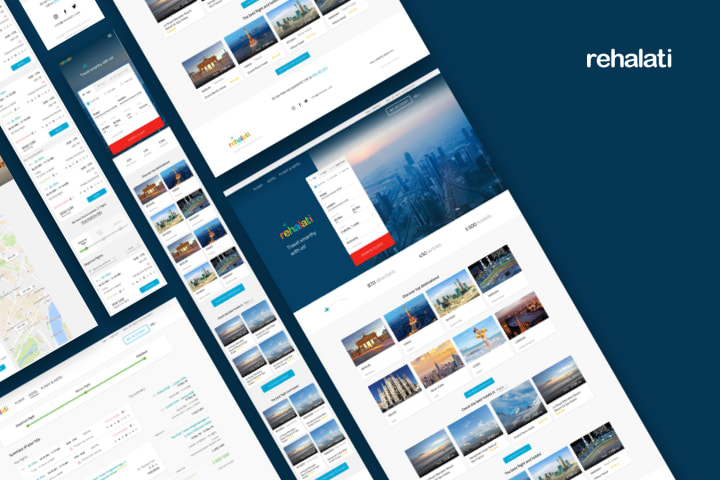Digital travel trends in the experience economy
Think about the last time you traveled. What do you remember? How does it make you feel? There is a good chance, that in your memory you have pictures of the landscape, the taste of local food, how warm or cold you felt on a particular day. You might remember vividly an amazing sunset on a beach, or the terrible smell of seafood that you hate at a farmers’ market.

Table of contents
What do all those things have in common? They are experiences. The digital travel business, just like real traveling, is based upon experiences. Is your business experience like a beautiful sunset on an exotic beach? To ensure that it is, we have prepared a list of 5 digital travel trends to boost your business to another level.
1. The digital horizon of the 2019 travel industry
We are living in an experience economy. When we think about our next trip, we crave Instagram-worthy pictures of nature, glamorous cities and charming, known only by locals places. We are inspired to travel to a certain destination by the social media pictures of our friends and colleagues, or travel influencers from Instagram or YouTube. When planning our next trip, we actively seek social media-worthy environments, destinations and experiences.
The new generation, regardless of what you call them, Millennials or Generation Z, place more value on experiences than things. They feel that money spent on doing things - activities and experiences - gives more happiness than money spent on owning things.
The new generation feels that saving money for a house is so hard they prefer to live in the moment and splurge on travel, holidays and trips. We use to go for a holiday once a year, but now the average is 3.5 times per year, and for Millenials it is even higher: 4.2.
How can your products or services fit this trend? It doesn’t matter if your product is a physical hotel or an online service. Only delighted customers will come back, share and recommend it to their friends and followers. Are you Instagram-worthy?
>> Learn how you can scale your digital product for better market fit

2. Keep it personalized, stupid
An old design and UX motto says, “KISS - Keep It Simple, Stupid”, which means that anything simple is good, easy to understand and use. But now in the digital age of artificial intelligence (AI), Big Data and machine learning it’s better to say, Keep It Personalized, Stupid. We’ve been spoiled by Netflix and Amazon recommendations of movies and products that we might like. Really great recommendations. So we crave this experience in other products and industries. Travel is no different.
How can you use artificial intelligence and machine learning in your travel business? First of all, by creating actionable insights from complex data. Airlines, hotels and other travel companies gather huge amounts of data about the travel habits of their clients. That allows AI algorithms to find patterns and suggest suitable products or services - for instance, people who traveled to Barcelona like you have bought also a trip to Salvador Dalí’s museum in Figueres.
Another way of using AI and personalizing the travel experience to customer needs is to find out what they like or dislike in your services. But how? The Dorchester Collection luxury hotel chain used artificial intelligence to sort through guest reviews and then adjusted its breakfast menu to match their guests’ tastes. Clever, no?
There is one more important thing to remember - customers love to be delighted by personalization, but they don’t like to be scared by feeling you know too much about them. Privacy concerns are rising with the general public. Be very clear what data you collect and why. New GDPR rules in European Union should also be respected.
3. Seamless communication with a brand
Another way that AI is changing the travel industry is in its communication with customers. Thanks to machine learning algorithms and natural language processing we can show some magic: the kind of experience that you’ve seen previously in science fiction movies, where you could just talk to a computer or write commands in natural, normal human language.
A company called Airport Digital have created Personal Concierge - a white label product that gives passengers the information they need, when they need it. Personal Concierge can be enabled through multiple platforms, including Facebook Messenger, SMS, Slack and airline and airport apps. Personal Concierge is a bot with whom you can communicate like with a real person, asking the same type of questions, for example “What is the cheapest way to get to the city center?” or “Is my flight delayed?”. What is more impressive, indoor maps, navigation and flight alerts are also included.

Today’s travelers want to engage with a brand seamlessly via chatting on Messenger or on a website, both desktop and mobile. They don’t care what technology you are using, they want to find precise information and ask questions, if needed.
The adoption of voice-enabled assistants like Siri on iPhones, Google Assistant on Android smartphones and Google’s Home device or Alexa, the personal assistant from Amazon, shows that customers are more and more accustomed to interact with services via voice commands. This is where AI can be used create customer-focused conversational interfaces. That brings a lot of opportunities to brands in the travel industry to use it to delight customers.
4. Disloyalty to bad design
This might be a shock for you. Or not. Nevertheless, take a seat. Customers have very little brand loyalty. In fact, 88% have said that they would quickly switch to another website or app if their digital experience is bad or doesn’t satisfy their needs. They have a really short attention span and very little patience.
For a business owner, this is bad news, because while your offer or service may be of very good quality, very often the design or user experience is lacking. Good design is king. We know when something has a great design, we can feel it, even when we cannot say what is it. Apple showed us the way.
Simplicity is the ultimate sophistication.
So do you have a choice? No. Your product’s design and user experience should be world class. But that’s a good thing. Good design brings more conversions, increased long-term loyalty and a better return on investment.
>> Check out Why Design Matters

5. Omni-channel experience
We are glued to our mobile phones, we do almost everything using them, but sometimes a small screen is not enough. One of the key takeaways from a report prepared by Phocuswright for Bing, is that 40% of customers research flights and accommodation using mobile phones, but only 21% do the bookings that way. That means customers don’t trust a small mobile screen for making the final decision and purchase.
What does this mean for travel brands? You have to ensure a great omni-channel experience because a customer might find your service or product on their mobile phone, but they are much more likely to buy it using a desktop computer. Ensure that your page looks similar on both mobile and desktop.
Try to convert mobile users to register or subscribe to a newsletter on your mobile site or download your app and then give them an offer they cannot refuse. The exact steps and tactics will vary depending on the type of service or product, but optimizing the customer journey through different touch points (both mobile and desktop) is a sure way to prevent users from dropping out.
The new travel experience
The experience economy is king in the real world and digital world alike. Make sure that your customers’ experience on mobile and desktop is seamless, personalized and with great design.
Share this article:






